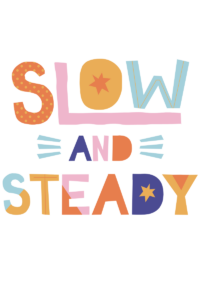I first read 5 Practices For Orchestrating Productive Mathematics Discussions in 2013, it’s resurfaced with its second edition.
It’s a whole group instruction format that allows for every student to have an opportunity to engage. It is not the traditional, whole group instruction where ‘teaching is telling’. The problem with that conventional method is that we are giving the message that learning comes from telling and not that learning comes from thinking. The 5 practices below explain how whole group instruction can be deep, meaningful and engaging for students.
Anticipating
At this point, you have presented the students with the task. Students can work individually, with partners or groups. While they are working, you circulate.
Questioning is an integral part of this. You can engage in discourse without leading students to the solution. We tend to want to spoon-feed students when they struggle. The purpose here is to NOT give away answers or a billion “clues” for students to reach the solutions.

You may choose to ask:
Assessing Questions– where the teacher stays to hear the answers to the question.
Advancing questions– where the teacher leaves and lets the students figure out what to do next.
I like to add a class “check-in” during this time. I ask one group to share something they noticed while working on the problem. This is not meant for students to start sharing answers but instead to share some insight. It may help the other groups come to a theory, or it may be shrugged off by the groups, which is totally fine.
Selecting
While you are monitoring, you’re looking for which students you are going to call on to share. You have to have a plan for calling on students. Gone are the days that you pick kids randomly or arbitrarily. Yes, we want to avoid calling on the same students every time but we also want responses to have a purpose.

Sequencing
There should be a specific order to the strategies you selected. Responses should build on one another. For example, moving from the concrete to abstract learning sequence. If you start off with the most abstract method (like Student C below) students will start tuning out. That’s why the sequence matters.

This step could possibly be merged with anticipating. When you’re thinking about what strategies the students might use, you could also think about which strategies you would want to be presented. Keep in mind students may not use the approaches you are thinking of, and then you have to rethink your plan on the spot.
If a student does not come up with a strategy that you really want to be shared. Fake it. Share the strategy and say you saw another student do it.
Connecting
This stage has you connect student responses and strategies used to the big idea. Instead of students having separate conversations where they talk about their own work (a show and tell), they are building on each other’s work and ideas. Students can share how their work is similar or different from one another.

So Where Does Math Workshop Fit In?
Small group instruction can happen before or after these whole group tasks. Especially after, if you see some students missing concepts or strategies.
This is why I advocate for small group to NOT be the only way we instruct. We lose the social interaction that lets us share ideas with a collective group. Students lose the opportunities and access to rich tasks when they are caged in certain group types (low, average, high).
Read: 3 Math Workshop Rules You Should Break
If the task does not take the whole math block, do what I like to call “centers and circulate”. Have students work on centers as you circulate and make observations. Too often, when implementing Math Workshop, we get caught up in small group instruction then don’t get a chance to see what’s going on with the rest of the room. This is a great time to check in on students at their stations/centers.
Because so many of us did not learn this way, this type of instruction may be hard to imagine. So let’s change that. It won’t go smoothly at first, nothing does. Start off by choosing one task. Try it. What do you have to lose?
Want to check out more?
MEMBERSHIP SITE:
https://zennedmath.com/online-courses/
FACEBOOK GROUP: Zenned Math Teachers
https://www.facebook.com/groups/zennedmathteachers/
YOUTUBE CHANNEL: Zenned Math
https://www.youtube.com/channel/UC5njH_5LoK6G67BvZecGfnw?
WANT ME IN YOUR INBOX? Sign up for my newsletter
https://view.flodesk.com/pages/5efc876dcaabca0028b95eb5
DISCLAIMER: Some links included in this blog might be affiliate links. If you purchase a product or service with the links that I provide, I may receive a small commission. There is no additional charge to you!
You start off by choosing a rich task. The key here is Rich Tasks. This step requires you to think about some ways students are going to solve the problem before you give it to them. Thinking about what could be possible student responses. You can figure that out by solving the problem yourself in as many ways as you can.

I recommend doing this step with a math coach, a professional learning community, or a grade level meeting. Colleagues can help you see different strategies that you may not have thought of.
The amount of problems you give is also essential. If you utilize fewer tasks/problems for instruction, you will be able to go deeper. One rich task is an excellent way to start.
Monitoring
At this point, you have presented the students with the task. Students can work individually, with partners or groups. While they are working, you circulate.
Questioning is an integral part of this. You can engage in discourse without leading students to the solution. We tend to want to spoon-feed students when they struggle. The purpose here is to NOT give away answers or a billion “clues” for students to reach the solutions.

You may choose to ask:
Assessing Questions– where the teacher stays to hear the answers to the question.
Advancing questions– where the teacher leaves and lets the students figure out what to do next.
I like to add a class “check-in” during this time. I ask one group to share something they noticed while working on the problem. This is not meant for students to start sharing answers but instead to share some insight. It may help the other groups come to a theory, or it may be shrugged off by the groups, which is totally fine.
Selecting
While you are monitoring, you’re looking for which students you are going to call on to share. You have to have a plan for calling on students. Gone are the days that you pick kids randomly or arbitrarily. Yes, we want to avoid calling on the same students every time but we also want responses to have a purpose.

Sequencing
There should be a specific order to the strategies you selected. Responses should build on one another. For example, moving from the concrete to abstract learning sequence. If you start off with the most abstract method (like Student C below) students will start tuning out. That’s why the sequence matters.

This step could possibly be merged with anticipating. When you’re thinking about what strategies the students might use, you could also think about which strategies you would want to be presented. Keep in mind students may not use the approaches you are thinking of, and then you have to rethink your plan on the spot.
If a student does not come up with a strategy that you really want to be shared. Fake it. Share the strategy and say you saw another student do it.
Connecting
This stage has you connect student responses and strategies used to the big idea. Instead of students having separate conversations where they talk about their own work (a show and tell), they are building on each other’s work and ideas. Students can share how their work is similar or different from one another.

So Where Does Math Workshop Fit In?
Small group instruction can happen before or after these whole group tasks. Especially after, if you see some students missing concepts or strategies.
This is why I advocate for small group to NOT be the only way we instruct. We lose the social interaction that lets us share ideas with a collective group. Students lose the opportunities and access to rich tasks when they are caged in certain group types (low, average, high).
Read: 3 Math Workshop Rules You Should Break
If the task does not take the whole math block, do what I like to call “centers and circulate”. Have students work on centers as you circulate and make observations. Too often, when implementing Math Workshop, we get caught up in small group instruction then don’t get a chance to see what’s going on with the rest of the room. This is a great time to check in on students at their stations/centers.
Because so many of us did not learn this way, this type of instruction may be hard to imagine. So let’s change that. It won’t go smoothly at first, nothing does. Start off by choosing one task. Try it. What do you have to lose?
[/et_pb_text][/et_pb_column][/et_pb_row]
Want to check out more?
MEMBERSHIP SITE:
https://zennedmath.com/online-courses/
FACEBOOK GROUP: Zenned Math Teachers
https://www.facebook.com/groups/zennedmathteachers/
YOUTUBE CHANNEL: Zenned Math
https://www.youtube.com/channel/UC5njH_5LoK6G67BvZecGfnw?
WANT ME IN YOUR INBOX? Sign up for my newsletter
https://view.flodesk.com/pages/5efc876dcaabca0028b95eb5
DISCLAIMER: Some links included in this blog might be affiliate links. If you purchase a product or service with the links that I provide, I may receive a small commission. There is no additional charge to you!

